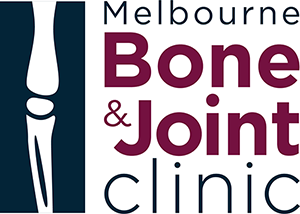Arthroscopy of the Knee
This document will give you information about an arthroscopy of the knee. If you have any questions, you should ask your GP or other relevant health professional.
What is an arthroscopy of your knee?
An arthroscopy (keyhole surgery) allows your surgeon to see inside your knee using a camera inserted through small cuts on your skin. Your surgeon can diagnose problems such as a torn cartilage, ligament damage and arthritis (see figure 1).
What are the benefits of surgery?
The aim is to confirm exactly what the problem is and for many people the problem can be treated at the same time.
Are there any alternatives to surgery?
Problems inside your knee can often be diagnosed using a magnetic scan (MRI scan) but you may then need an arthroscopy to treat the problem.
Physiotherapy and anti-inflammatory painkillers such as ibuprofen can sometimes prevent or delay the need for an arthroscopy.
What does the operation involve?
Various anaesthetic techniques are possible. The operation usually takes 30 to 45 minutes.
Your surgeon will examine the inside of your knee. They will wash out any loose material caused by wear of the joint surfaces. It is usually possible for your surgeon to trim or repair a torn cartilage without needing to make a larger cut.
What complications can happen?
1 General complications
- Pain
- Bleeding
- Infection of the surgical site (wound)
- Unsightly scarring
- Blood clots
- Difficulty passing urine
2 Specific complications
- Damage to nerves around your knee
- Developing a lump under your wound
- Infection in your knee joint
- Severe pain, stiffness and loss of use of your knee (complex regional pain syndrome)
How soon will I recover?
You should be able to go home the same day.
It is common for your knee to be a little swollen for a few weeks. Walking can be uncomfortable.
Regular exercise should help you to return to normal activities as soon as possible. Before you start exercising, ask the healthcare team or your GP for advice.
Most people make a good recovery and can return to normal activities. Your surgeon will be able to tell you if you are likely to get further problems with your knee.
Summary
An arthroscopy allows your surgeon to diagnose and treat some common problems affecting your knee, without the need for a large cut on your skin. This may reduce the amount of pain you feel and speed up your recovery.
Acknowledgements
Author: Mr Stephen Milner DM FRCS (Tr. & Orth.)
Illustrations: Medical Illustration Copyright © Medical-Artist.com
This document is intended for information purposes only and should not replace advice that your relevant health professional would give you.
The operation and treatment information on this page is published under license by Arvind Jain from EIDO Healthcare Australia and is protected by copyright laws.
